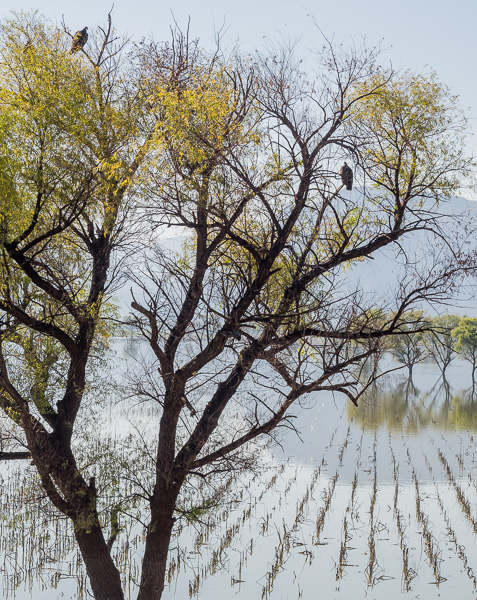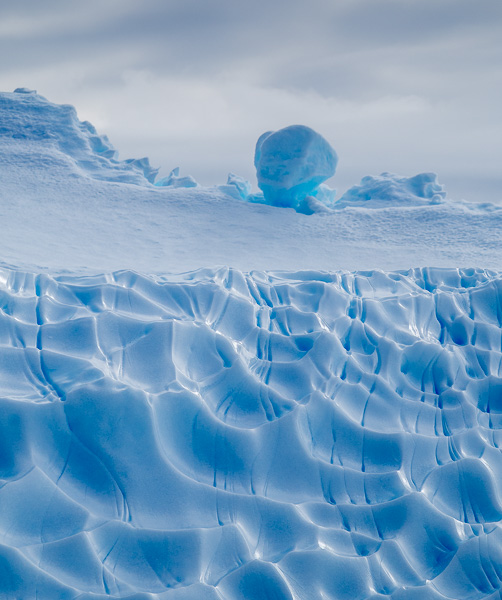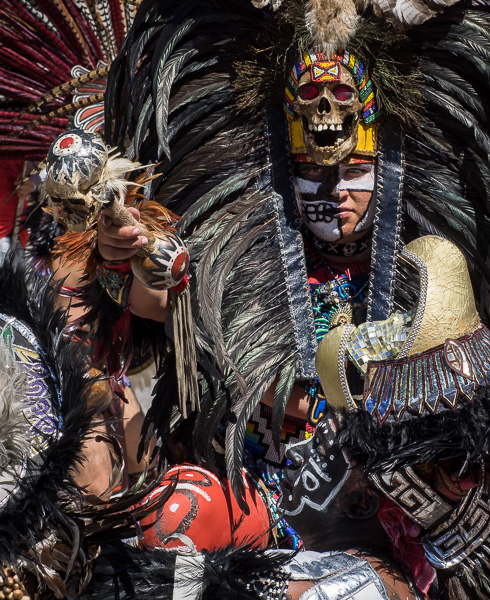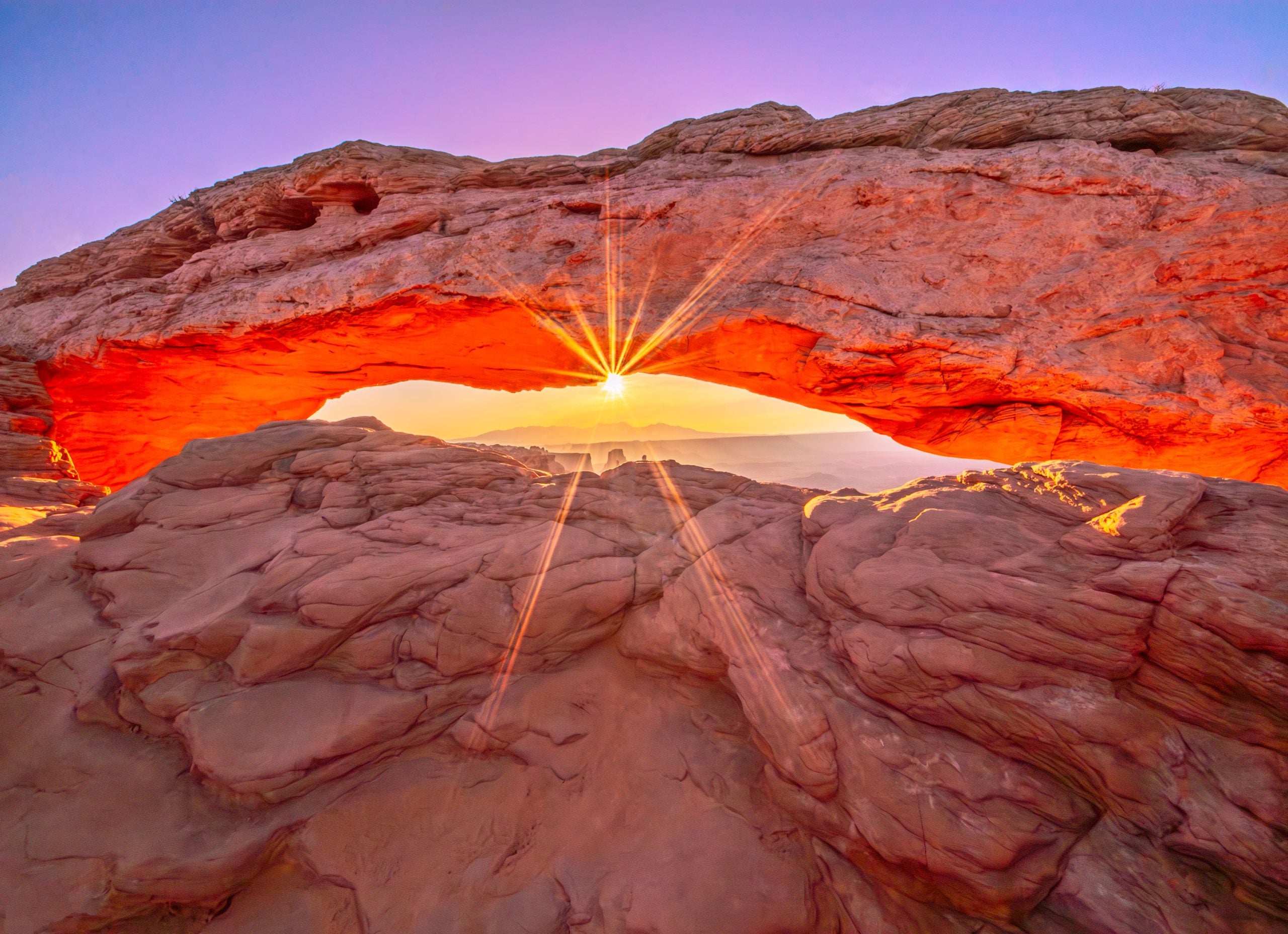Article by Rubén Osuna
Introduction
Several splendid articles have been written about the Leica M8.Michael Reichmann published his comments here, atThe Luminous Landscape, with a complimentary article about infrared sensitivity.Erwin Putsis publishing a series of analysis at his site, and we have two interesting issues (1,2), quite technical and deep (more will follow).Sean Reidalso has a series of articles covering diverse subjects at his subscription site (4 for the moment). Finally, Jean-Marie Sepulchrehas written another interesting article about the camera, this time in French. All these analyses tell a lot about the camera. The question is if it is possible to say something not previously said, and meaningful.
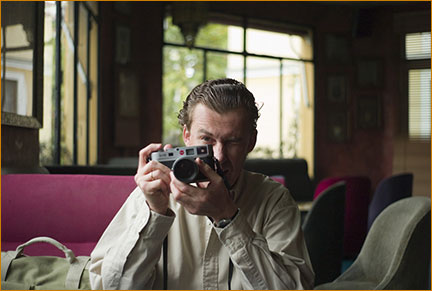
Madrid, November 2006. M8 and Summicron 35mm.
Processed in LightRoom Beta. Rubén Osuna
___________________________________________________________
Rangefinder cameras are not reflex cameras
Rangefinder cameras are not reflex cameras. This is obvious, but many people don’t take account of it when thinking about this kind of tools. In a rangefinder camera you don’t see through the lens. That is the key. You see through an independent finder. This has some advantages. The luminosity of the finder doesn’t depend on the luminosity (or aperture) of the lens. The field of view doesn’t depend either on the field of view of the lens, and the same goes for the depth of field. Moreover, the camera does not need a mirror for connecting optically the lens and the finder. This allows reducing the distance between the mount and the sensor or film. Even more, it is possible to reduce to a minimum distance between the last element of the lens and the sensor or film. This characteristic is important because it allows you to avoid retrofocus designs in wide-angle lenses, and make them much smaller. Reflex cameras have a typical distance between mount and film plane of 40 millimeters (there are small differences among different mounts), and this imposes the adoption of retrofocus designs for every wide-angle lens. A retrofocus design is like an inversed telephoto lens. If you look through a telescope by the wrong side you will see the opposite effect, quite similar to that of a wide-angle lens. These types of lenses typically have more lens elements and are bigger and more difficult to design for a good correction of aberrations, one of the sources of image degradation (the other source, diffraction, is unavoidable and depends on the aperture). However, retrofocus designs have a particular advantage in the digital medium: the light rays fall over the film (or sensor) plane in a more perpendicular way. Electronic sensors have a thick cover of filters that deviate the incident light if it comes in acute angles. Reflex cameras have a key advantage here, because the distance between the mount and the sensor plane makes easier to get more perpendicular light rays coming to the sensor surface. The old advantage of rangefinder cameras in the film age is a disadvantage in the digital age, and the opposite happens for reflex cameras.
At the beginning of the digital era all camera makers agreed in the importance of the described problem. Many of them considered impossible to make digital versions of their 35mm cameras because, despite being reflex cameras, the distance between mount and sensor plane did not allow for a enough perpendicular incidence of the ray lights into the surface at the borders and corners of a 35mm frame. The reason for the general adoption of a new format –roughly based on the APS-C measures– was not only the production costs of the sensors, but also the technical problem of getting acceptable quality in all the frame. Many brands kept the mount, but altered the format size for improving the “telecentricity coefficient” (see the following table), the ratio between the distance from the mount to the sensor (lens to flange distance) and the diagonal of the sensor. Other brands adopted new specifications from the scratch, with big mounts, large lens-to-flange distances and/or small formats (the Contax N or Olympus 4/3 systems are good examples of this).
Mount and format
Lens to flange distance (millimeters)
Sensor diagonal (millimeters)
Telecentricity coefficient
A
B
C = A/B
Nikon F/35mm
46.50
43.3
1.07
Nikon F/DX
46.50
28.4
1.64
Canon EOS/35mm
44.00
43.3
1.02
Canon EOS/APS-C
44.00
27.0
1.63
Contax N/35mm
48.00
43.3
1.11
Pentax K/35mm
45.46
43.3
1.05
Pentax K/APS-C
45.46
28.3
1.61
Minolta AF/35mm
44.50
43.3
1.03
Minolta AF/APS
44.50
28.4
1.57
Olympus OM/35mm
46.00
43.3
1.06
Olympus 4/3
38.67
22.5
1.72
Leica R/35mm
47.00
43.3
1.09
Leica R/1.37 crop
47.00
31.7
1.48
Leica M/35mm
27.95
43.3
0.65
Leica M/1.33 crop
27.95
32.4
0.86
In our opinion, the “telecentricity” problem was overstated at the time. Technology of microlenses and filters has improved and the initial worries were not justified. Canon has been able to offer the best image quality in the 35mm market with their “full frame” line of professional cameras. The coefficient is the same for digital and film (1.02). The APS line of Canon cameras is only a cheaper line, not a better performer. This was also the case of Contax, which developed a new system and mount around a coefficient of 1.11, thinking on digital products. Other reasons explain the demise of Contax. The coefficient of Leica’s R system is 1.09, and it is likely that actually they are developing a digital camera with a full frame sensor. The digital back for film R cameras adopted a smaller sensor due to the size of the film gate.
Nikon had an even higher coefficient for the F mount and 35mm format, but they chose to increase it by reducing the diagonal of the sensor (although Kodak developed “full frame” digital cameras with the F mount). The coefficient of the new DX format is 1.64, and Nikon claimed that image quality reasons, and not costs reasons alone, justify it. Many other brands made similar decisions. Pentax preserved the K mount, but altered the telecentricity coefficient from 1.05 to 1.65 by adopting a smaller format also based on the APS-C size. The same goes for Minolta and the AF mount, now used by Sony.
There are two extreme cases. The first one is Olympus. They abandoned the OM specifications for a new Four Thirds standard based on the same principles that other manufacturers had applied to their digital cameras, but in a new and extreme way. The mount has a very big diameter relative to the diagonal of the sensor, which is quite small (3.6 times smaller than a 35mm sensor in terms of surface, 2 times smaller in terms of diagonal). The lens-to-flange distance relative to the before mentioned diagonal also is enormous, resulting in the largest coefficient in the ranking (1.72).
Leica –which also has a D line of cameras and lenses based on the Four Thirds standard– had to resolve a very complicated problem in dealing with the M system of rangefinder cameras. The coefficient for the 35mm format of that system is the smallest (0.65), and too small for a digital solution. Therefore, they reduced the size of the sensor, adopting a cropped 35mm format that yields a coefficient of 0.86, which is also the smallest among actual digital cameras. Wide-angle non-retrofocus lenses increase the difficulties of such a system.
These numbers make clear that the best image quality actually in the market is achieved with a coefficient around 1 (Canon 35mm format cameras), just like it was in the film era. Bigger numbers make things easier for the lens designer though, and cheaper for the photographer. Smaller numbers introduce huge problems to solve. Leica’s nightmare with infrared light in the M8 is an example of this (although the “problem” also affects the other digital rangefinder camera, the Epson R-D1, as Sean Reid has shown, and many other cameras). Leica was forced to incorporate an innovative set of microlenses, take out the low-pass filter and reduce or combine other filters. Even then, sophisticated software of internal computation must be applied in order to reduce vignetting. The ultra-thin filter layer over the sensor performs different functions, and a part of the infrared light is not filtered. More advanced filters and coatings will be possible if the actual path of technical progress continues, but actually we must accept some compromises, as Erwin Puts has explained.
In any case, Sean Reid has pointed this interesting fact: black and white photography can benefit from infrared light, just because it shows up tonality differences in the darkest parts of the image that would remain unnoticed if only visible light is considered in the drawing of the picture.
___________________________________________________________
The lenses of Leica’s rangefinder system
Most Leica lenses are recent designs, and they are the state-of-the-art in build quality and design creativity. This is true for the R and the M systems. Leica incorporated aspheric lenses many years ago, in the first version of the mythical Noctilux lens (1966). However, they were faithful to the Double-Gauss (based on symmetry) and retrofocus formulas until recent years, when Leica’s engineers had success in developing a new way for lens design. The Double-Gauss formula has performance limits, and thanks to tight tolerances in manufacturing, new glass types and better computations those limits were reached in the 70s.
The new approach is based on aspheric surfaces. Using these non-spherical surfaces the classic Double-Gauss formula was abandoned in favor of more sophisticated (asymmetric) designs. These new designs follow the principle of not fixing which is not broken.
The flux of light runs though the lens like the water through a pipe. The larger the angle of view (wide-angle lenses) and the wider the aperture are, the greater the flux of light running through the lens. To some extent, the “pressure” depends on the magnitude of that flux and the size of the “pipe”. Moreover, the light finds obstacles in its path: the lens elements. Increasing the number of glass elements you can get more degrees of freedom for aberration corrections but, on the other hand, the light rays are more prone to be distorted or degraded. You also might increase the total volume (diameter and length) of the lens, but rangefinder cameras need small lenses to avoid the blocking of the finder. Therefore, fast wide-angle lenses for rangefinder cameras are very difficult to design. The aspheric glass surfaces are a blessing, allowing for smaller lenses and better spherical aberration correction.
The two aspherical surfaces of the Noctilux 50mm f/1.2 were manually grinded forty years ago. This technique was too expensive and prone to manufacturing errors. Leica tried again many years later, when the engineers were looking for a way to surpass the performance levels of the Double-Gauss based designs. The first “new” lens was produced from 1988 and commercialized from 1990. It was the Summilux 35mm f/1.4 “Aspherical”, with two aspherical glasses of grinded type. Leica also made a study for a 50/2 APSH in 1989, but it never was commercialized. In the 90s Leica was looking for a broad implementation of new design principles based on aspheric lenses and asymmetric groups of lens elements.
Then, a new type of aspherics manufacturing (molded or blank-pressed type) allowed for a revision of the seminal Summilux 35mm design in 1994, of similar performance (the new Summilux 35mm f/1.4 “ASPH”). From that moment on, Leica started a frenetic revision of all its M lenses: 21/2.8 ASPH and 35/2 ASPH in 1997; Tri-Elmar 28-35-50/4 ASPH, 90/2 ASPH and 24/2.8 ASPH in 1998; 28/2 ASPH and new version of Tri-Elmar 28-35-50/4 ASPH in 2000; 50/1.4 ASPH in 2004; 75/2 ASPH in 2005; 28/2.8 ASPH and Tri-Elmar 16-18-21/4 ASPH in 2006.
During this same period they were also developing new lenses for the R system (reflex cameras), particularly the first zooms designed by Leica (from 1995). New cameras were developed as well: the R8 (1996), R9 (2002), M7 (2002), CM (2003), MP (2003) and CM zoom (2004). Finally, Leica worked in a few “in house” digital projects, like the scanner camera with R mount Leica S1 (1998) and the digital back for R cameras (2004). All this is quite an achievement for a small company like Leica.
A few classical lenses remained in Leica’s catalogue: the 50/1 (Noctilux), from 1976; the 50/2, from 1979; and the 75/1.4, from 1980. These classical lenses are excellent performers and remain as landmarks and examples of the excellence reached with the classic design formulas and high quality manufacturing of Leica. The best source for the principles and history of Leica’s optics design is Erwin Puts’ “Leica Lens Compendium”, that can be downloaded for free from his website. We strongly recommend it.
___________________________________________________________
Resolution, from the lens to the paper
The printed image is rarely considered in the reviews that deal with the performance of a lens, a camera or both elements. The print process introduces many new variables into de equation, and it is a great performance equalizer at moderate print sizes. When we make big prints the differences in lens or camera performance show up more easily.
Prints from digital images depend on three main variables: the size of the image in pixels, the physical size of the sensor and the lens resolving power. Image size and sensor size jointly determine the spatial resolution of the sensor. We can think on the image size (in pixels) as a container of real detail. The bigger the image in pixels is, the greater amount of detail can be recorded. The lens transmits this detail to the sensor. The real detail effectively captured is distributed over the bigger surface of the paper base of the final print. The size of the sensor determines how large this enlargement should be.
There are many factors affecting the sensor’s ability in recording detail, but we will simplify the explanation suggesting a simple rule. The real detail finally captured by the camera system (sensor and lens) can be approximated from this formula:
R = 1 / (1/r1+ 1/r2)
where R is the total resolution of the camera system (in line pairs per millimeters), r1is the resolution provided by the lens and r2is the resolution of the sensor. Only when one of the “r” tends to infinity the total resolution of the system, R, tends to the other “r”. This means that the total resolution of the sensor or the lens never is fully brought into the photograph. Actual sensors for reflex and rangefinder cameras typically have resolutions from 60 to 100 lp/mm, but good lenses show much higher numbers (at least on axis). The greater the resolution of the lens is, the better we will be exploiting the resolution of the sensor.
Then, we must get the print. The real detail recorded is enlarged until the final size of the print image. Therefore, cameras based on smaller formats need to resolve the same real detail in a smaller capture format, and this implies to reach higher resolution levels (in line pairs per millimeters). Where are not introducing the contrast variable in order to make the reasoning easy to follow, but it is enough to say that higher levels of detail imply lower contrast, this is, finer detail is more difficult to resolve clearly. Therefore, smaller sensors and smaller format lenses must work harder in order to get the same final image on paper than a bigger format camera.
This history is relevant for the fully understanding of the real significance of the achievement that the Leica M8 camera represents. Leica lenses are great performers. It is enough to give a look to the MTF graphs of lenses like the Summicron 75/2 ASPH, the Summilux 50mm f/1.4 ASPH or the Summicron 28mm f/2 ASPH. Really impressive. The sensor’s Nyquist limit (the sampling frequency, or maximum resolution you could hypothetically get) for the Leica M8 is 73.5 lp/mm (pixel spacing of 6.8 microns), although aliasing, colour interpolation and the multiplication of contrast functions reduce the real detail it can actually resolve. Erwin Puts points to the rule of 50/50, this is, Leica’s target is accomplished if the camera system is able to get 50 lp/mm at 50% of contrast. He has found that this is in fact accomplished by the M8. The Leica rangefinder camera and lenses can resolve more real detail, but at lower levels of contrast. A 35mm frame must be enlarged 8.5 times for a 8×12 inches print (roughly, A4 size). However, the details captured into the cropped sensor of the Leica must be enlarged 11.3 times (= 8.5 x 1.33). Whether the M8 camera resolves 50 lp/mm of real high quality detail, we will get 4.5 lp/mm in the A4 print (the 10MP image should be printed at more than 300 pixels per inch or 6 lp/mm in order to get that real detail on paper). The unaided human eye also has resolution limits. We can see, at best, 6 lp/mm of real detail at the optimum distance, and 3 to 4 lp/mm on average. Therefore, the A4 prints from the M8 will have high quality real detail we cannot easily see. In our opinion, A4 prints made from M8 files will be unsurpassed in terms of perceived sharpness. Even cameras armed with sensors with more megapixels will be unable to provide sharper prints. When you make bigger ones –and A3 sizes are very popular in this digital age– the M8 images must be printed at 240 pixels per inch (almost 5 lp/mm), but the real detail is the same, distributed over a bigger surface (divide 4.5 lp/mm by a half). In this case, other cameras that resolve more real detail at high contrast levels will yield sharper A3 prints, in theory.
It must be clear that in order to obtain more real detail in the print you need sensors with higher Nyquist limits and the same size, bigger sensors and/or more powerful lenses. Actually there exist sensors with more resolution (in line pairs per millimeters), but they are smaller (it is the case of APS-C sensors with 10 or 12 megapixels). There are bigger sensors as well, but the resolution is lower: the Canon 1Ds Mark II has a Nyquist of 69.4 lp/mm (pixel spacing of 7.2 microns) and the 5D one of 61.0 lp/mm (pixel spacing of 8.2 microns). We doubt you can find better lenses for the 35mm format, although other lens manufacturers have models with similar performance. To sum-up, the Leica M8 can be surpassed in terms of sharpness in big prints only by a few cameras and lenses, thanks to their bigger sensors. Of course, perceived sharpness is only a part of the tale.
The M8 has the advantage of the absence of the low-pass filter, but the excess of lens resolution over the sensor resolution may generate moiré problems. Fortunately, it is very difficult to get visible traces of moiré with the M8 in real world photographs.
High ISO values not only introduce “noise”, they also destroy detail and reduce the contrast of the remaining detail, degrading even the color reproduction. Noise performance of the M8 camera is very good at ISO 160 and 320 (in fact, the real sensitivities are 200 and 400). Some noise can be perceived at ISO 640 (800 in reality), but at 1250 (1600) it is too high to remain unseen even in small prints. Much detail is preserved at high ISO values however, despite the noise, and black and white pictures taken at ISO 1250 looks well on paper. The noise performance is similar to reflex cameras currently in the market, except for the Canons, which are vastly superior at ISO 1600 and 3200.
Shake is another source of quality losses, but Leica lenses (and the best Canon primes) are not stabilized by means of small optic groups, micromotors and computer calculations. The reason is that stabilization affects negatively to the size, luminosity and performance of the lenses (see this excellent comparative analysis of Leica and Olympus zooms by Valentín Sama). Therefore, in low light conditions you must to accept a relative loss in detail, contrast and color fidelity. This loss comes from different sources: from the lens, because wide-open the aberrations (another kind of “noise”, now optical) degrade the image; from the sensor, because at high ISOs the picture is built from less light information; or from the shake of the camera, because you need to increase the exposure time for gathering more light. The weapon of Leica for low light shooting is in the lenses, great performers even wide-open, with maximum apertures of f/2, f/1.4 and even f/1. They are second to none here, and with a very well defined personality and fingerprint. Canon also can be proud of two superb f/1.2 lenses, and other excellent f/1.4 lenses, but they are really unbeatable in sensor design and image processing.
___________________________________________________________
Angle of vision and framelines in the M8
You know, reflex cameras are more versatile and rangefinder cameras more “natural” to handle and work with into the range of focal lengths that correspond to the angles of view of the human vision. It is argued that the human vision has an angle of view similar to that provided by a 50mm lens in 35mm format (diagonal, 47°; horizontal, 40°; vertical, 27°), but the truth is that the human eye has an angle of view with good quality of vision of only a few degrees (thefovealfield). We improve our vision by means of a continuous shake of the eye called “saccade”. In some sense, we imperceptibly scan. The wider the scanning area is, the less information we get from it (color, movement or detail). If the area to cover is too wide other intentional moments of the eyes or the head are activated, but this cannot be considered a “natural” angle of view, and it is stressing. The range of angles of view covered with relax by the saccades typically range between those corresponding to 35 and 90mm lenses in 35mm format. We “see” a wider area, but most of it is of peripheral vision, deprived of much visual information. On the other hand, telephoto lenses magnify details that we cannot normally see even if concentrate in a small area. In the before mentioned range of focal lengths, the rangefinder cameras excel. When the focal length is too short or too long, several framing or focusing problems arise. Reflex cameras provide the best solution for extreme angles of view.
Leica, however, has altered the magnification of the M8 finder, from the classical 0.72 to a lower 0.68. It responds to the aim of including framelines for the Elmarit 24mm lens, that provides the angle of view of a 32mm lens in 35mm format due to the cropped sensor. However, the relative position of the framelines in the finder does not depend on the crop of the sensor. It only depends on the finder’s physical size and magnification. Therefore, we see the framelines a bit reduced in size in the M8 due to the change in magnification. For instance, the 28mm lines are easier to see, but they have not the size of the 35mm lines in the film based M cameras (a 28mm lens in the M8 provides the angle of view of a 37mm lens in a film based M camera). The 28mm lines look like the 28mm lines of M cameras with 0.72 finders, but a bit reduced. That’s all. The conclusion is that when you work in the M8 with a lens that provides you, lets say, the angle of view of a 35mm lens in 35mm format you must to deal with 28mm lines (or so), and they are more difficult to see and to frame with, specially if you wear glasses. The 35mm framelines are easy to see with glasses in the M8, but the 28mm are not. If you don’t need glasses –or if you install a dioptric corrector in the finder–, you can easily see the 28mm lines, but they don’t leave too much space surrounding them and I find the experience less pleasing than using the real 35mm framelines in a 0.72 finder. On the other hand, the 75mm lens provides the angle of view of a 100mm lens, but the framelines are those of a 75mm (remember, a bit reduced in size due to the magnification), and this make using that angle of view very comfortable in the M8.
To sum-up, both the size of the capture area and the magnification of the finder have changed. The combined impact of these changes is not so obvious for the veteran M photographer. In the M8, a particular angle of vision corresponds tobiggerframelines than before, and this is problematic for wide angles of view and positive for narrow angles of view. The angle of view of the 28mm lens in 35mm format is now lost, but the angle of view of a 135mm lens is lost as well. The actual range of angles corresponds to lenses from 33 to 120mm (in 35mm format), instead of the classical range of 28 to 135mm. The first M camera, the M3 from 1954, had framelines for 50, 90 and 135mm lenses, and the 35mm framelines were incorporated later.
___________________________________________________________
Depth of field markings in the lens barrel and the M8
Leica M lenses have depth of field (DoF) markings. They are very useful because many people pre-focus the rangefinder camera for reportage, street photography or “animals photography”, as Garry Winogrand preferred to call it. You can get a precise focus with a good rangefinder camera, and Leica M lenses are smooth to operate, but it is difficult to focus fast, especially when the subject is moving. Focus errors in wide-angle lenses are dissimulated in moderate prints, so there are some tolerance margins here. There is a classic trick for fast focusing with rangefinder cameras. Leica M photographers usually select an aperture (stopping down) and then pre-focus the camera to the hiperfocal distance following the DoF markings in the lens barrel. If you select f/11 as your working aperture, the right mark for f/11 must to be pointed to infinite. Doing that you will be focusing at the hiperfocal distance and your DoF will be maximum for that aperture. The two f/11 marks indicate your DoF range, from the distance pointed to by the left f/11 mark to the distance pointed to by the right f/11 mark (infinite). Anything into that range of distances will be perceived relatively sharp in prints of moderate size (DIN A4 size or 8×12).
Now comes the problem: the sensor of the M8 is cropped. How does it affect the hiperfocal distance and depth of field in general? A bit of mathematics will help us here. The DoF of a particular camera can be approximated in different ways, but we find particularly useful this expression:
DoF = (2 * H * s 2 ) / (H 2 – s 2 ) for H > s
The DoF depends on the hiperfocal distance (H) and the distance to the subject (s). The hiperfocal distance is the focus distance that maximizes the DoF. The hiperfocal distance and the deph of field have an inverse relationship. WhensapproachesH, DoF tends to infinite. We can calculate the hiperfocal distance from
H = L 2 / (f * CoC)
Where L is the focal length, f is the aperture number and CoC is the circle of confusion. The circle of confusion is a conventional value. It depends on the size of the sensor, the size of the print and the particular vision capabilities and subjectivity of the observer.
The question is this: assuming the CoC conventions are useful for practical work, how the cropped sensor affects the depth of field? When the format changes the CoC changes too, because the enlargement of the original capture medium needed for a particular print size is altered. If we use a smaller sensor, we must to enlarge the detail captured more than necessary from a bigger sensor. Then, we have CoCf= CoCd*1.33, this is, the circle of confusion of the Leica M8 (CoCd) is 1.33 smaller than the circle of confusion of a film based Leica M (CoCf). Obviously, this affects the hiperfocal distance (Hd= Hf* 1.33) and the depth of field, which has an inverse relationship with the variableH(so DoFd< DoFf). Other variables being the same, the M8 will show a narrower depth of field due to the smaller circle of confusion. However, on the other hand, due to the crop in the sensor, not all variables can be the same. The angle of view for a particular focal length (L) will be different, and if we compensate the distance to the subject or the focal length for obtaining the same angle of view, the DoF will be affected again. An interesting result derived from the previous reasoning is this: when you crop a digital image in the computer you are effectively reducing the DoF in the print!
Lets give attention now to the lens markings and pre-focusing problem. The hiperfocal distance changes by a factor of 1.33 in the Leica M8, and the consequence is that the lens markings for the nearest higher aperture stop (lower f number) must be used for pre-focusing. For instance, if your selected working aperture is f/11, use the f/8 lens markings for selecting the hiperfocal distance. The 1.33 crop translates to an exact stop difference. A visual example will help here.
See these markings (from a Summicron 35mm). The f/11 aperture has been selected and the lens is focused to the hiperfocal distance for a 35mm format. In this case, the hiperfocal distance is 3.3 meters (for a typical circle of confusion of 33 microns). The DoF range goes from infinite to 1.7 meters.

Now we have applied the before mentioned rule for a 1.33 cropped sensor and the same lens. The circle of confusion reduces to 25 microns. The working aperture is f/11, but the markings used for selecting the hiperfocal distance are those of f/8. The right mark is pointing to infinite. Now the hiperfocal distance is 4.4 meters, and the DoF range goes from infinite to 2.2 meters.

Look at the ratio of the two hiperfocal distances: 4.4/3.3 = 1.33 (= 1/0.75). Therefore, the differences in hiperfocal distances depend on the diagonal differences of the sensors (the so-called crop factor), and 1.33 allows for an easy rule: use the marks of the immediately lower f number.
___________________________________________________________
Conclusion
Rangefinder cameras are a different thing, for the manufacturer (especially in the digital era), the lens designer and the user. Moreover, the Leica M8 has adopted several compromises. They must to be known, understood and accepted. The recompense is an interesting instrument with strong points and limitations. The potential image quality provided by the M8 camera is at the level of the best cameras actually in the market for moderate prints. You must to accept, however, the possible presence of moiré and infrared contamination and a narrower range of focal lengths. To see the world throughout the finder of this camera is a different experience, and the rangefinder user is in fact a different photographer.
November, 2006
___________________________________________________________
Efraín García,Juan Oliver and Javier Martín are professional fashion and advertising photographers.
Rubén Osuna is University Professor at the UNED, Madrid.
Read this story and all the best stories on The Luminous Landscape
The author has made this story available to Luminous Landscape members only. Upgrade to get instant access to this story and other benefits available only to members.
Why choose us?
Luminous-Landscape is a membership site. Our website contains over 5300 articles on almost every topic, camera, lens and printer you can imagine. Our membership model is simple, just $2 a month ($24.00 USD a year). This $24 gains you access to a wealth of information including all our past and future video tutorials on such topics as Lightroom, Capture One, Printing, file management and dozens of interviews and travel videos.
- New Articles every few days
- All original content found nowhere else on the web
- No Pop Up Google Sense ads – Our advertisers are photo related
- Download/stream video to any device
- NEW videos monthly
- Top well-known photographer contributors
- Posts from industry leaders
- Speciality Photography Workshops
- Mobile device scalable
- Exclusive video interviews
- Special vendor offers for members
- Hands On Product reviews
- FREE – User Forum. One of the most read user forums on the internet
- Access to our community Buy and Sell pages; for members only.






